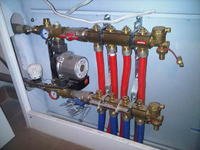I have a problem with underfloor heating, namely it does not want to heat.
I have heating in 3 rooms, i.e. kitchen-living room (4 loops approx. 30 m2), bathroom (one loop approx. 9 m2), corridor (one loop approx. 7 m2)
I also have one ladder radiator in the bathroom and one radiator in a room with no underfloor heating.
Heating was used by a plumber who supposedly knows his job. He vented the entire system twice.
I regulate the temperature for the floor heating using the Hertz thermostatic head with a capillary.
How I started the floor heating and set the temperature to 25 degrees. the floor was not warm, the radiators were hot. After turning off the radiators, nothing has changed, i.e. the floor is still cold.
I set the maximum temperature on the head, i.e. over 50 degrees and the floor heating started, the temperature increased in the living room indicated about 25 degrees in the bathroom, almost 28 degrees. I changed the thermostat to 30 degrees and the temperature on the floor heating dropped to 21 degrees.
The input collector is warm at 30 degrees Celsius, but the pipes further away from the collector are cooler, and the return collector is completely cold. I noticed that when the head was set to the maximum, the return was warm.
Which may be the reason why the floor heating does not work at low temperature. It seems to me that the floor heating should be heating at the same time. about 30-35st.
Pictures of my boiler room may help.
Best regards and thank you for the advice.
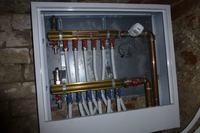
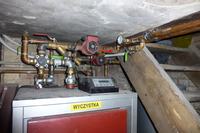
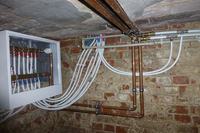
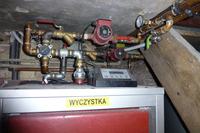
I have heating in 3 rooms, i.e. kitchen-living room (4 loops approx. 30 m2), bathroom (one loop approx. 9 m2), corridor (one loop approx. 7 m2)
I also have one ladder radiator in the bathroom and one radiator in a room with no underfloor heating.
Heating was used by a plumber who supposedly knows his job. He vented the entire system twice.
I regulate the temperature for the floor heating using the Hertz thermostatic head with a capillary.
How I started the floor heating and set the temperature to 25 degrees. the floor was not warm, the radiators were hot. After turning off the radiators, nothing has changed, i.e. the floor is still cold.
I set the maximum temperature on the head, i.e. over 50 degrees and the floor heating started, the temperature increased in the living room indicated about 25 degrees in the bathroom, almost 28 degrees. I changed the thermostat to 30 degrees and the temperature on the floor heating dropped to 21 degrees.
The input collector is warm at 30 degrees Celsius, but the pipes further away from the collector are cooler, and the return collector is completely cold. I noticed that when the head was set to the maximum, the return was warm.
Which may be the reason why the floor heating does not work at low temperature. It seems to me that the floor heating should be heating at the same time. about 30-35st.
Pictures of my boiler room may help.
Best regards and thank you for the advice.







